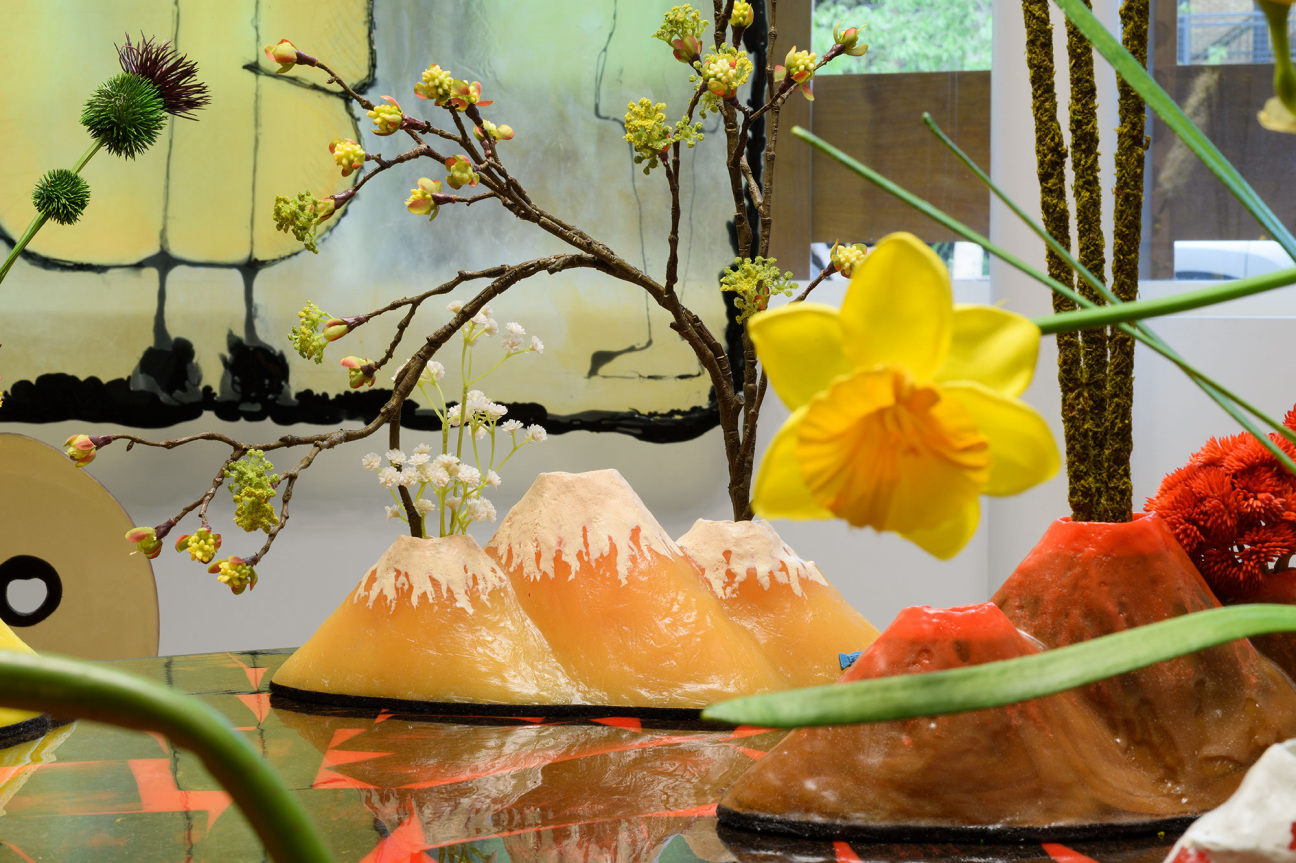Stella Bottai: Do you recall how we first met?
Eliza Ryan: Yes, I wrote to you at the beginning of the pandemic; I was in rural Connecticut. When everything stopped, I started taking long walks and collecting flowers and branches and making arrangements. I could focus on it for hours. I asked a friend who owns a bookstore in Chinatown, called Aeon, if he would send me a specific book: Bruno Munari’s A Flower With Love.
One thing I took away from it was that anyone could make arrangements from any type of materials. I found that incredibly encouraging. I started sending photographs of my arrangements to people, and then I thought, in this time when so many people are separated from loved ones and can’t connect in person, I can send messages from one person to another via email. I started A Flower With Love Virtual Munari and friends would ask me to send a message to another friend.
SB: I’m remembering there’s something in the book about how the arrangements you see in it should not be copied.
ER: Yes. Munari ends with, “There are a lot of examples in the book, but not to copy, it’s more important if you invent them yourselves, seeing as now you know how, ciao ciao.”
SB: I’ve been thinking of this idea of avoiding repetition because for Gaetano Pesce, the idea of uniqueness and individuality within forms that repeat is important. We decided to introduce a number of works that would span about 50 years and show different sides of his practice. Gaetano is interested in this idea of design and architecture being portraits of a community.
ER: What’s interesting about the vases is that although a lot of the forms are the same, the colors and the actual physicality of the resin makes each a unique object. Similar to how I think about arrangements. There are some repetitive forms or styles that work well together, but it’s also a response to the vessel or the object.
SB: Flowers are interesting in relation to Gaetano’s work because they imply a sense of impermanence. For this exhibition we had to create sculptures with flowers in response to the vases that will last throughout the show—from May to October—which brought us to think about dry flowers initially, and then fake flowers. What’s interesting is they don’t look fake and allow for possibilities natural flowers might not.

ER: Definitely. This was the first time I’d worked with fake silk and plastic flowers, and it was really fun to go to the Flower District in New York.
SB: Gaetano is interested in natural forms, not as a celebration of nature as such, but rather for the possibilities of unique forms emerging even within patterns of repetition. For example, his Organic building in Osaka, Japan is one of the earliest to include live plants within it. The conversation between his work and live flowers, plants and shapes starts quite a long time ago. In our show, you responded to the vases more in terms of a universal shape.
ER: Yes. For me, the process begins with the selection of stems and flowers/buds or leaf shapes—color is very important, both bright and bold/dark tones. I look for the shape of the branch and how buds, flowers and leaves are arranged. I don’t necessarily think about how they will go together, this happens later with each specific vessel and environment. In the case of Gaetano, the room felt alive with his force, his genius, his humor, both in his past and new work. You (Stella) included many archival works, which all heavily influenced my designs. There was almost a domestic scene that was created with the chairs and the tables, and the frames and shelves. That was also incredibly inspiring.
SB: Did you find that the vase being a figurative image affected how you were thinking about it?
ER: It offered an opportunity to be playful with the design. Some of the vases looked to me like ocean waves with a crest on top with the white and blue juxtaposed. Some were volcanic looking and some were mimicking the mountains. His use of color was incredibly inspiring. Things come together intuitively. You’re not sure of the direction it’s going, but you know when you hit it.
SB: Well, in a way, it’s almost as if Gaetano was there in person, even if he isn’t, because his objects and design have such a strong voice. That’s why I see this as a collaboration even though it’s been done in stages.










 in your life?
in your life?

